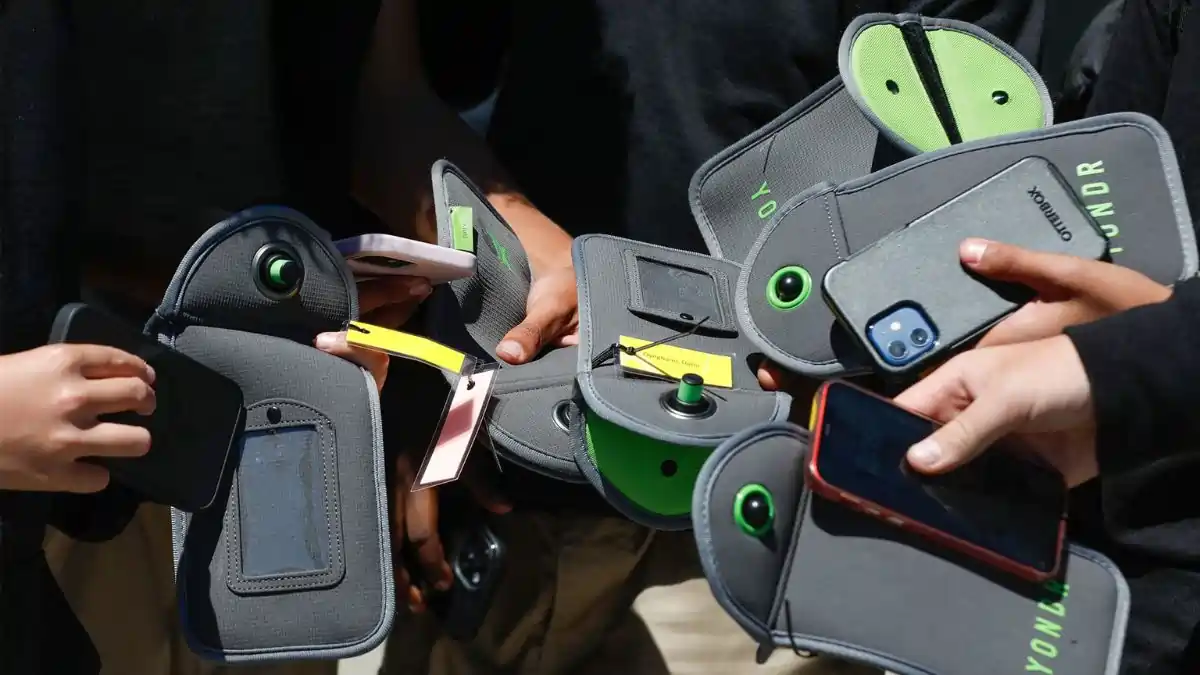Democrat, Republican States Unite in Seeking Mobile Phone Ban in US Schools
At least eight states have enacted bans on cellphone use in schools over the past two years, and proposals are being considered in several more states this year.
In a rare display of unity, Democratic and Republican lawmakers across the United States are coming together to address a growing issue: the excessive use of mobile phones in schools. With concerns mounting over students’ mental health and the distraction caused by constant screen time, a bipartisan push for a mobile phone ban in US schools is gaining traction.
Over the past two years, eight states, including California and Florida, have enacted policies to restrict mobile phone use during school hours. As more states propose similar measures, the movement reflects a national effort to tackle the challenges posed by smartphone addiction among students.
Why Are States Banning Mobile Phones in Schools?
The push for a mobile phone ban in US schools stems from several factors:
- Mental Health Concerns
Studies have linked excessive screen time to anxiety, depression, and sleep disturbances in children and teens. Surgeon General Dr. Vivek Murthy has highlighted the need for “phone-free times” in schools, emphasizing the importance of creating environments where students can focus on learning and social interactions without digital distractions. - Classroom Disruptions
Teachers across the country report that smartphones have become a significant source of distraction in classrooms. Whether it’s social media, gaming, or texting, these devices hinder student engagement and academic performance. - Bipartisan Support for Change
Leaders from both parties agree on the urgency of this issue. For example, Arkansas’ Republican Governor Sarah Huckabee Sanders and California’s Democratic Governor Gavin Newsom may differ ideologically, but both are vocal advocates for limiting cellphone use during school hours.“We will ban cellphones in our schools, bell to bell, so that our kids are not distracted, in class or out of it,” Governor Sanders declared in her recent State of the State address.
How Are States Implementing the Bans?
The policies vary from state to state:
- Florida: A 2023 law mandates public schools to ban cellphone use during class and block access to social media on district Wi-Fi.
- California: By 2026, all school districts will be required to establish their own cellphone policies.
- Arkansas: More than 100 schools joined a pilot program funded by grants for adopting phone-free policies.
States like New Hampshire, Iowa, and Nebraska are exploring similar proposals. Meanwhile, New York Governor Kathy Hochul has hinted at statewide restrictions, though details are pending.
Parental Concerns and Opposition
While the bans aim to address pressing issues, they have faced opposition from some parents:
- Emergency Communication
Parents worry about losing the ability to contact their children during emergencies. In past school shootings, mobile phones have served as lifelines for students to communicate with their families. - Overarching Approach
Critics argue that banning phones during school hours won’t solve larger issues like bullying or the risks of social media.
“We need to teach kids how to navigate technology responsibly,” says Keri Rodrigues, president of the National Parents Union. - Logistical Challenges
Some parents rely on mobile phones for coordination, such as arranging transportation or extracurricular schedules.
The Impact of Mobile Phone Bans
The introduction of mobile phone bans has yielded noticeable benefits in schools:
- Improved Focus: Teachers report better classroom engagement when phones are removed from the equation.
- Mental Health Boost: A break from social media reduces stress and fosters healthier peer interactions.
- Stronger Social Skills: Without phones, students are more likely to engage in face-to-face conversations, building better communication skills.
Kim Whitman, co-founder of the Phone Free Schools Movement, captures the essence of this shift:
“All children, whether in urban or rural settings, need that seven-hour break from the pressures of phones and social media during the school day.”
What’s Next for Mobile Phone Bans in US Schools?
As more states consider proposals, the debate continues to grow. Policymakers and educators must address the nuanced challenges of implementing these bans, balancing the benefits with parental concerns.
At a national level, 77% of US schools claim to restrict mobile phone use for non-academic purposes, according to the National Center for Education Statistics. However, enforcement remains inconsistent, leaving room for improvement.
Ultimately, bipartisan collaboration on this issue may set the stage for broader reforms in how technology is integrated into education.
Internal Links for Readers:
- Learn more about Airtel down and how network disruptions impact daily communication.
- For the latest updates on tech and education, visit our homepage on Phone Lover.







